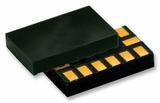下载

AN-1266
APPLICATION NOTE
One Technology Way • P. O. Box 9106 • Norwood, MA 02062-9106, U.S.A. • Tel: 781.329.4700 • Fax: 781.461.3113 • www.analog.com
Autonomous Shock Event Monitoring with the ADXL375
by Venkataraman Chandrasekaran and Neil Zhao
Rev. 0 | Page 1 of 8
INTRODUCTION
According to Piersol and Paez in Harris’ Shock and Vibration
Handbook, shock is defined as a dynamic excitation of a
physical system with a relatively short duration as compared
to the time required for the system exposed to that excitation
to fully respond (see the References section).
In the Vibration and Shock Handbook, also listed in the
References section, DeSilva states that shock occurs when
a force, a position, a velocity, or an acceleration is abruptly
modified and creates a transient state in the system considered.
Shock is a vector with both magnitude and direction.
Accurate shock information can be valuable in a wide range
of applications, such as profiling the usage of leased assets or
sensitive equipment, shipping data loggers, and accounting for
motion artifacts caused by high-g events. In contact sports,
biking, or in the military, crash or impact metrics (such as
magnitude, point of contact, and direction) can be used by
doctors to better diagnose concussion or head trauma resulting
from accidents.
To effectively embed a measurement system in these appli-
cations, which are typically portable and battery powered, it is
important for the sensor to be a small, 3-axis sensor with low
power consumption in addition to offering sufficient dynamic
range and the bandwidth to accurately capture the shock events.
This application note describes a technique for autonomously
detecting and capturing shock events using a low power, high-g,
3-axis digital MEMS accelerometer with minimal intervention
from the host processor. The accelerometer can be programmed
to monitor single or double (primary and secondary) shocks
along any combination of X, Y, and/or Z axes. In addition, the
entire shock profile can be captured for further analysis using
an integrated 32 sample memory.
ABOUT THE ADXL375
The ADXL375 is a 3-axis digital MEMS accelerometer that
provides low power consumption (145 µA) and high resolution
(98 mg/LSB) measurement up to ±200 g at 1600 Hz bandwidth.
The digital output data is formatted as 16-bit, twos complement
and is accessible through a SPI (3- or 4-wire) or I
2
C digital
interface.
An integrated memory management system with a 32-level first in,
first out (FIFO) buffer can be used to store data to minimize host
processor activity and lower overall system power consumption.
The ADXL375 is supplied in a 3 mm × 5 mm × 1 mm, 14-lead
LGA package.








